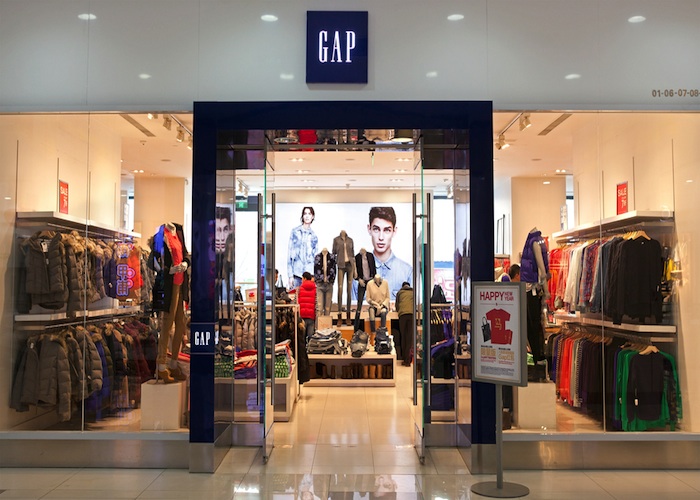
If there’s one takeaway to learn about how Gap CEO Art Peck is approaching its retail future it’s that he’s willing to try almost anything on the tech side to see what gets customers excited. This may mean — as he once said in an interview —that Gap has to “throw some stuff at the wall” to see what works.
Peck may be taking that statement literally, as in a recent interview with Fast Company the digitally-minded CEO said Gap is going to be testing interactive digital walls in its storefronts. It’s also going to be evaluating new showroom displays, mobile registers and RFID-tagged clothing. He may even take Gap’s digital footprint outside the stores and introduce the company’s customers to a quicker way to pick up items — clothing vending machines.
As confident as Peck is that digital is the way to go to give the company a new retail and customer boost, he’s realistic that not every avenue may be as seamless as he’d like. It’s all part of what he calls “Retail 3.0” — the ultimate omnichannel experience where it tailors its products to mobile shoppers as a way to spread its digital presence.
“I would like to be able to articulate a nice linear path as to what our stores are going to evolve to,” he said in the interview. “But I think it’s going to be a lot messier than that.”
Peck, like most retail CEOs, has realized that relying on brick-and-mortar is no longer going to make the cut. For Gap, this means reinventing the retail wheel, being receptive to digital innovation, and helping tailor its strategy to the next generation of shoppers. The “rapid prototyping,” he said, will be “critical for figuring out this collision of physical and digital.”
“We’ve been doing business the same way for 40 years, and there are very few 40-year-old business models that are successful forever,” he added.
While some retailers struggle to re-invent themselves to keep up with the changing times, Gap has always been aware of the shift. Sure, it’s not the best time to be a retailer stuck in between physical and digital, but instead of relying on the old way of thinking, Peck is bringing his digital-first mindset to help shake up its strategies.
“They’ve always been ahead of the curve,” Sucharita Mulpuru, an eCommerce analyst at Forrester told Fast Company, which reported that Gap has a $2.26 billion eCommerce business and builds its technology in-house.
“Gap is one of those brands that’s at an inflection point. It will either go the way of J.C. Penney, with its glory days behind it, or do what J.Crew has done: have a massive retrenching and turn the business around.” Mulpuru added.
Peck believes its glory days are ahead, thanks to the help of its omnichannel solutions.
“We’ve made significant progress in the omnichannel space, and we’re very excited about the customer response there so far,” Peck said in the company’s earnings call in February. “And we’re pushing to roll out all of the capabilities across all of our brands across all of North America as quickly as possible. On top of omnichannel, I just really want to spend a moment more broadly on experience. And if you’ve been following some of the changes we’ve done, you would have noted that we brought together traditional marketing activities and our digital activities inside both Gap and Banana Republic.”